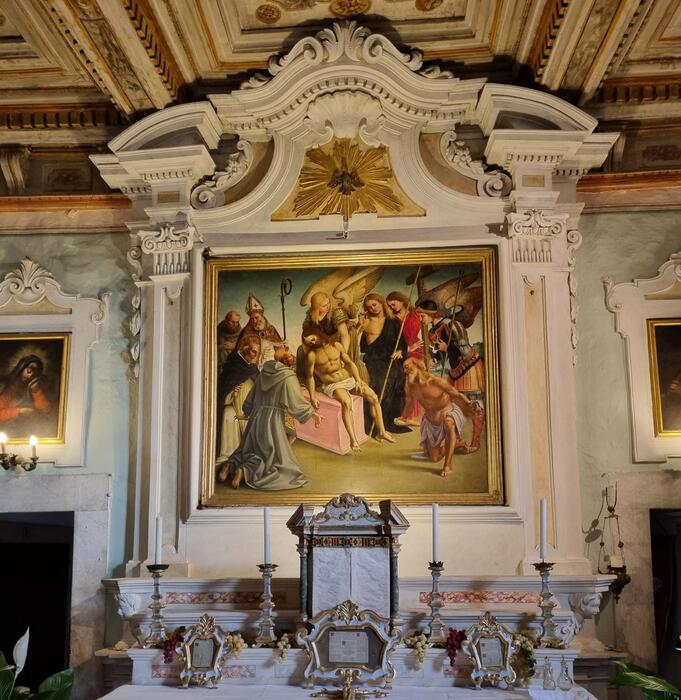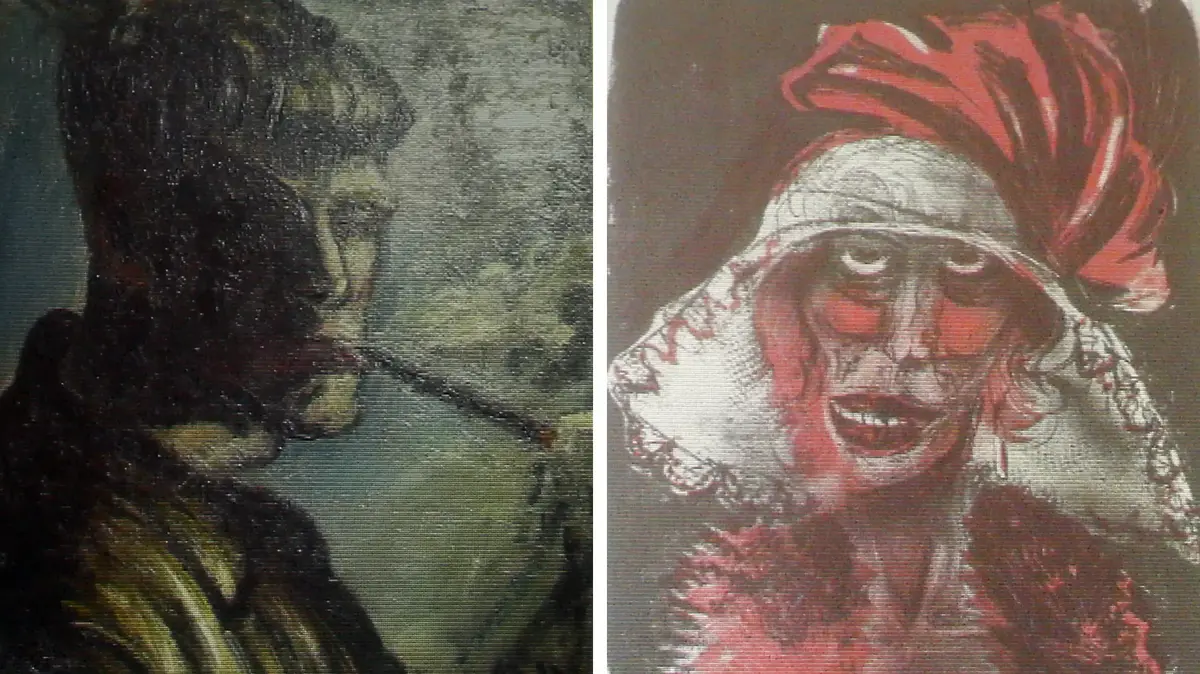CORTONA - The attention in Cortona is now all for Luca Signorelli and for the great exhibition at Palazzo Casali that will celebrate the fifth centenary of his death from 23 June to 8 October. About thirty works selected by Tom Henry, one of the world's leading experts on the artist, granted by the main Italian and foreign museums will tell the story of the painter who was a pupil of Piero della Francesca, worked with Perugino at the Sistine Chapel and inspired Raphael and Michelangelo.
In the historic building now home to the Museum of the Etruscan Academy and the City of Cortona (Maec) the preparation is carried out, while in a room the restorer Nadia Innocentini has worked for a long time to give light to one of the masterpieces of the exhibition, the famous Tondo depicting the Madonna and Child with the patron saints of the city. The celebration of Signorelli in the ancient Etruscan Curtun offers the opportunity for a close encounter with Gino Severini, one of the fathers of Futurism. The two Cortona doc, the master of the Renaissance and one of the giants of the avant-garde founded four centuries later by Filippo Tommaso Marinetti, have left deep traces in the maze of streets of the fascinating historic center of the city. Pearls by Luca da Cortona are preserved in the small but precious Diocesan Museum, in Piazza Duomo, founded in 1945 in the former Church of Jesus. Above all, the Lamentation over the Dead Christ, of 1502, and the Communion of the Apostles, of ten years later, stand out. Next to them a masterpiece by Fra Angelico, the Annunciation painted around 1430. The Museum also houses the cartoons of the mosaics made by Severini between 1945 and 1946 for the Stations of the Cross along Via Santa Margherita. It was commissioned by Bishop Giuseppe Franciolini as a sign of gratitude to the saint for having saved the city from bombing. Right in front of the entrance to the Museum is the Co-Cathedral of Santa Maria Assunta.
At the end of the left aisle, protected by a reliquary and almost half-hidden from the altar of the apse chapel, there is the small mosaic of the Redeemer donated by Severini. Along the climb of Via Santa Marherita that from the main square, on the façade of the Church of San Marco stands the large mosaic created by the artist in 1961. But the real surprise is on the first floor of the building that houses the Maec, where three rooms welcome about sixty masterpieces by the brilliant painter. Severini, born in Cortona in 1883, moved to Rome after his adolescence where he met and became a pupil of Giacomo Balla - with whom in 1910 he signed the Manifesto of Futurist painters together with Boccioni, Carrà and Russolo - and from 1906 in the Paris of Picasso, Braque, Apollinaire and Gertrude Stein remaining there for twenty years. The permanent collection, inaugurated in the autumn of 2021 and the result of the donation of his daughter Romana, is a whirlwind of paintings - including the famous ''Maternity'' of 1916 - and drawings including masks, still lifes, the famous dancers, engravings, documents and photographs in a setting in three chapters - the family, the imaginary museum and the nuns - which contextualizes the works to the period and the environment in which they took shape. "The cities to which I feel most deeply connected are Cortona and Paris," said Severini. In the first I was born physically, in the second intellectually and spiritually. I may not feel that kind of natural attachment that every man feels for the land where he was born but I have the' impression of loving this land in a deeper way''.
To admire another work by Signorelli of great value but immovable you have to climb in the Poggio area. Here, the tiny church of San Niccolò houses the Banner of the Company of the Saint, with the Deposition of the Dead Christ of 1510, and on the back, the Madonna and Child with Saints Peter and Paul, visible since 2005 thanks to a mechanical arm that rotates the painting placed above the altar. A hole in the wall next to the canvas reveals the ancestor of an alarm system designed in ancient times against criminals, a rope connected with the caretaker's bed. One hundred years ago, four centuries after Signorelli's death, the people of Cortona placed a plaque on the outer wall of the hermitage to remember that in this quiet place "the mighty wing of the pictorial genius gathered to sing over the centuries with harmony of colors and humanity of faces motherhood and martyrdom, the two sublime passions in which universal life is summarized". (ANSA).
Signorelli 500, in Cortona a map of great art
2023-06-05T06:43:51.272Z
Highlights: Luca Signorelli will be celebrated at Palazzo Casali in Cortona from 23 June to 8 October. About thirty works selected by Tom Henry, one of the world's leading experts on the artist. The celebration of the painter in the ancient Etruscan Curtun offers the opportunity for a close encounter with Gino Severini. "The cities to which I feel most deeply connected are Cortona and Paris," said Severini of the cities he was born in and lived in.

The attention to Cortona is now all for Luca Signorelli and for the great exhibition at Palazzo Casali that will celebrate the fifth centenary of his death from 23 June to 8 October. (ANSA)














